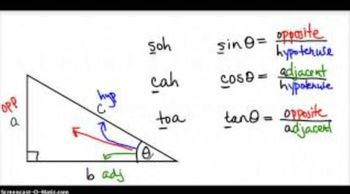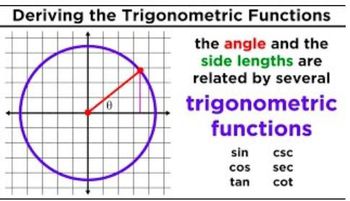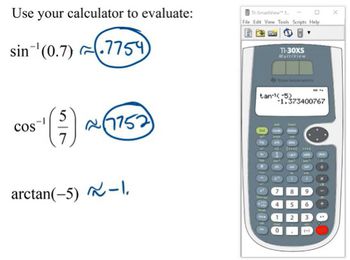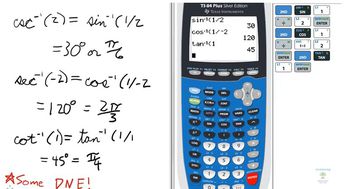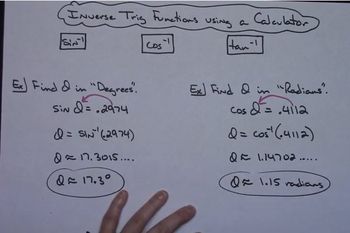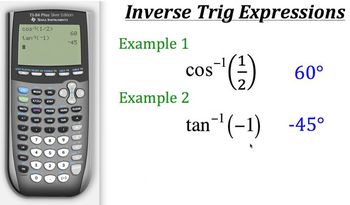Table of contents
- 0. Review of College Algebra4h 43m
- 1. Measuring Angles39m
- 2. Trigonometric Functions on Right Triangles2h 5m
- 3. Unit Circle1h 19m
- 4. Graphing Trigonometric Functions1h 19m
- 5. Inverse Trigonometric Functions and Basic Trigonometric Equations1h 41m
- 6. Trigonometric Identities and More Equations2h 34m
- 7. Non-Right Triangles1h 38m
- 8. Vectors2h 25m
- 9. Polar Equations2h 5m
- 10. Parametric Equations1h 6m
- 11. Graphing Complex Numbers1h 7m
2. Trigonometric Functions on Right Triangles
Trigonometric Functions on Right Triangles
Problem 20a
Textbook Question
Solve each problem. See Examples 1 and 2. Distance Traveled by a Ship A ship travels 55 km on a bearing of 27° and then travels on a bearing of 117° for 140 km. Find the distance from the starting point to the ending point.
 Verified step by step guidance
Verified step by step guidance1
<Step 1: Understand the problem setup. The ship travels in two legs, first 55 km at a bearing of 27° and then 140 km at a bearing of 117°. We need to find the straight-line distance from the starting point to the ending point.>
<Step 2: Convert the bearings into angles relative to the north-south line. A bearing of 27° is 27° clockwise from north, and a bearing of 117° is 117° clockwise from north.>
<Step 3: Use the Law of Cosines to find the distance between the starting and ending points. The Law of Cosines is given by: \( c^2 = a^2 + b^2 - 2ab \cdot \cos(C) \), where \( C \) is the angle between the two paths.>
<Step 4: Calculate the angle between the two paths. Since the bearings are measured clockwise from north, the angle between the two paths is \( 117° - 27° = 90° \).>
<Step 5: Substitute the known values into the Law of Cosines formula: \( c^2 = 55^2 + 140^2 - 2 \cdot 55 \cdot 140 \cdot \cos(90°) \). Since \( \cos(90°) = 0 \), the formula simplifies to \( c^2 = 55^2 + 140^2 \).>
Recommended similar problem, with video answer:
 Verified Solution
Verified SolutionThis video solution was recommended by our tutors as helpful for the problem above
Video duration:
3mPlay a video:
Was this helpful?
Key Concepts
Here are the essential concepts you must grasp in order to answer the question correctly.
Bearings
Bearings are a way of describing direction using angles measured clockwise from the north. In this problem, the ship's path is defined by two bearings: 27° and 117°. Understanding how to interpret these angles is crucial for visualizing the ship's movement on a coordinate plane and for calculating the resultant distance.
Law of Cosines
The Law of Cosines is a formula used to find the lengths of sides or angles in a triangle when two sides and the included angle are known. In this scenario, after determining the angle between the two paths traveled by the ship, the Law of Cosines can be applied to find the distance from the starting point to the ending point, which is the third side of the triangle formed.
Recommended video:

Intro to Law of Cosines
Vector Addition
Vector addition involves combining two or more vectors to determine a resultant vector. In this problem, the ship's journey can be represented as two vectors based on the distances traveled and their respective bearings. By breaking these vectors into their components and adding them, one can find the overall displacement from the starting point to the ending point.
Recommended video:

Adding Vectors Geometrically

 6:4m
6:4mWatch next
Master Introduction to Trigonometric Functions with a bite sized video explanation from Nick Kaneko
Start learningRelated Videos
Related Practice







